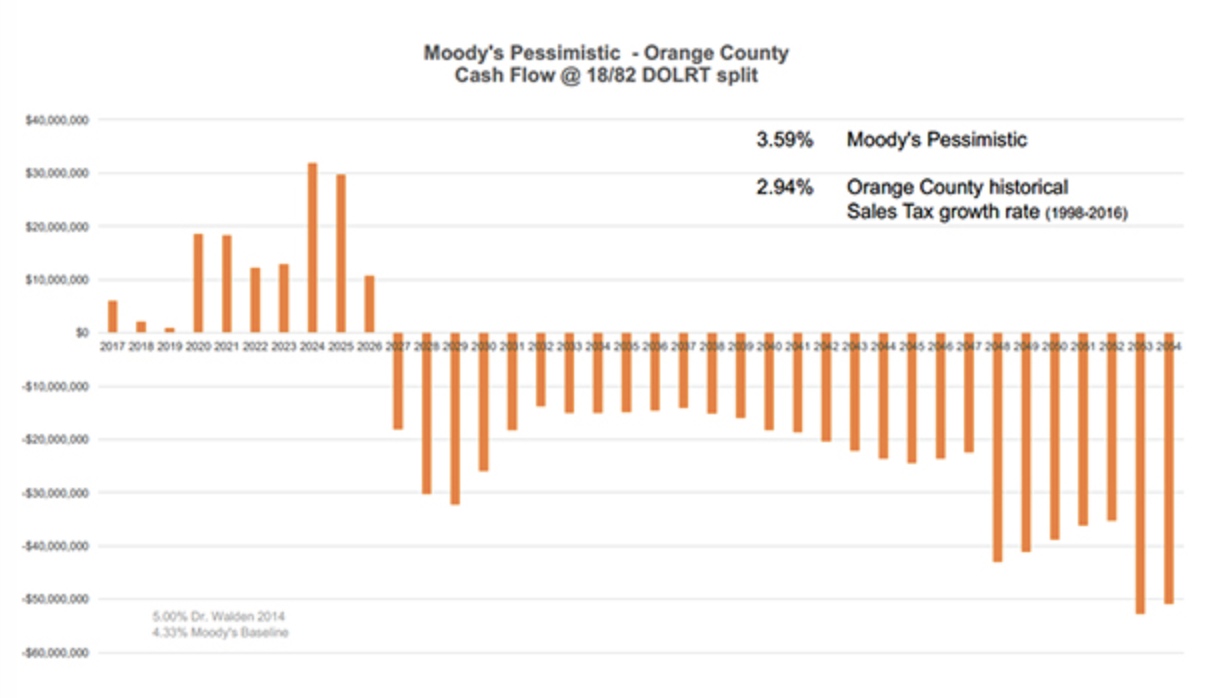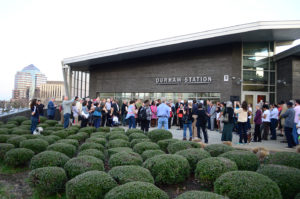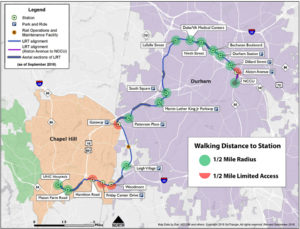2017 DECISIONS
Update April 21
Here is what is happening with the Orange County Transit Plan discussion. The Orange County Commissioners vote on April 27th.
The updated transit plan adds nearly $2 billion for light but does not add needed funds for bus service or bus rapid transit. As a result, bus hours have been cut by over 20% and the , a planned Bus Rapid Transit system from Eubanks to Southern Village. is not adequately funded. The plan adds nearly a billion dollars in debt and over $900 million in interest to build the project, and most recently additional debt to maintain the service.
The plan assumes that Orange County’s sales taxes will grow by 3-6% every year for the next 45 years. The county’s consultant has told the commissioners that the plan is very, very risky for Orange County. If there’s an overage due to construction or interest rates, or if there’s a funding shortfall, then the county may need to rely on its general fund (which is used for schools and essential services) to make up the difference. The overall project costs about $300 million for Orange County.
- April 20th Orange County work session. The Commissioners discussed the controversial Orange County Transit Plan, which has been updated to include commuter rail service between Durham and Wake County. They were presented with new scenarios with favorable cash balances for Orange County – mostly because GoTriangle is planning to borrow even more money in another area and a private consortium has offered (but not committed) to provide additional funding – most of which has been added to Orange County’s side of the ledger.
The commissioners were pleased to see numbers that worked, but they didn’t ask any questions about the revenue or financing assumptions that were problematic in the past.
There was some discussion about possible issues when GoTriangle reported that neither Durham or GoTriangle would agree to give Orange County an exit strategy in case of a short fall in revenue or a change in service that didn’t work for the county. Commissioners are open to alternative contract language – “as long as it doesn’t interfere with the project moving forward”.
The risks haven’t really changed – but on paper the project looks acceptable politically. The commissioners still have not openly discussed likely scenarios where the sales taxes don’t grow as expected. If you recall, the Board specifically requested on April 4th that the Consultant bring the Moodys Pessimistic numbers. That has not happened. The graph below illustrates this scenario of what will happen to Orange County cash reserves using these more conservative assumptions. Not good news for Orange County.

If Moody’s more pessimistic assumptions are used, Orange County will not have enough transit tax revenue to cover commitments.
- April 18th Orange County public hearing. This commission discussion followed a jam packed public hearing (provide video link). Slightly more that half the public statements opposed the light rail. (The County archive contains additional comments and the majority runs strongly opposed to the rail project.) Many of the critical comments at the public hearing focused on the concern about the 3.2 billion dollar price tag. GoTriangle has had to resort to risky long term borrowing to try to make the project feasible. The counties will have to repay $1.25 billion of this debt with no state or federal help, including about $900 million in interest alone. These debt payments will sap our transit funds until 2062.
- Video links to all the April 18th comments
- April 4th Orange County Commission meeting. Davenport, the independent consultant, highlighted the risks of the GoTriangle plan for both costs and revenues. Link to Davenport Report.
- December, Orange County Commission meeting. The Commission responds to citizen requests for a financial review of the regional and county plans by employing their financial advisor Davenport to review the plans.
On April 27, the Orange County Commissioners will decide whether to commit to funding the Durham Orange Light Rail Transit (DOLRT). Here are the risks to this plan:
- County taxpayers will be committed to a $935 Million dollar debt for 45 years to pay for the Durham Orange Light Rail.
- Light Rail will serve few Orange County residents leaving working families, seniors and low-income communities without access to transportation.
- Orange County bears the financial risk disproportionally on Orange County because there are few development opportunities for Orange County development and the plan consumes the entire transit tax for the next 40 years.
- Downturns in the economy or misses in optimistic assumptions will have a deleterious effect on County funds for schools and affordable housing.
- Almost all of the dedicated 1/2 cent sales transit tax monies will go to paying for light rail and long-term and short-term debt so other needed public transit will not be implemented.
A majority voted for a special designated transit tax in 2012 because transit is important to Orange County residents. But we want the best value for the money we are raising each year.
About Us: When GoTriangle announced the new 2.5 billion dollar pricetag (in future dollars) for the Durham-Orange Light Rail Transit, not including interest on the debt, leaders from Smart Transit Future, Orange County Voice and Chapel Hill Alliance for a Livable Town (representing thousands of local residents) formed a collaborative effort to educate citizens about the costs and utility of the Orange County Transit plan.











Follow Us